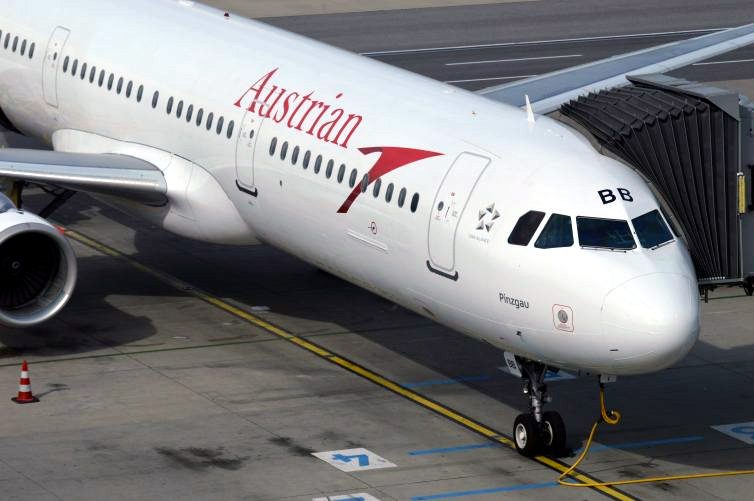
Austrian Airlines A321-100 “Pinzgau” – Photo: Alastair Long | AirlineReporter
Following a five-day trip to Austria, my son and I flew back from Vienna International Airport (VIE) to London Heathrow (LHR) in economy on Austrian Airlines — flight OS455. We had sampled a serious amount of wiener schnitzel over the last few days and that was important; we had to bench test Austrian’s own wiener schnitzel on the way home.
The airline’s slogan is “We fly for your smile,” and we were hoping to find lots of smiles.
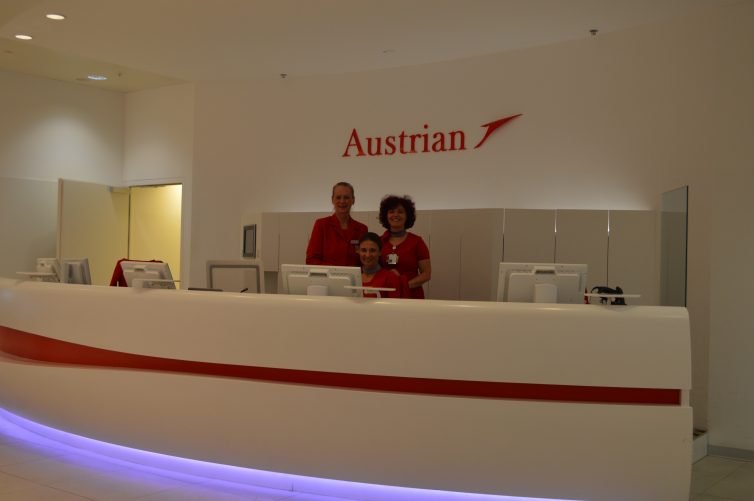
We Fly For Your Smile – Austrian Business Lounge reception at Gate F – Photo: Bo Long | AirlineReporter
We arrived at VIE and made directly for Austrian’s short-haul business lounge at Gate F in Terminal 3 — courtesy of the airline. The friendly receptionist found us on her list and gave my son an Austrian branded set of aircraft Mega Trumpf (top trumps) cards – we didn’t even need to fly for his first smile.
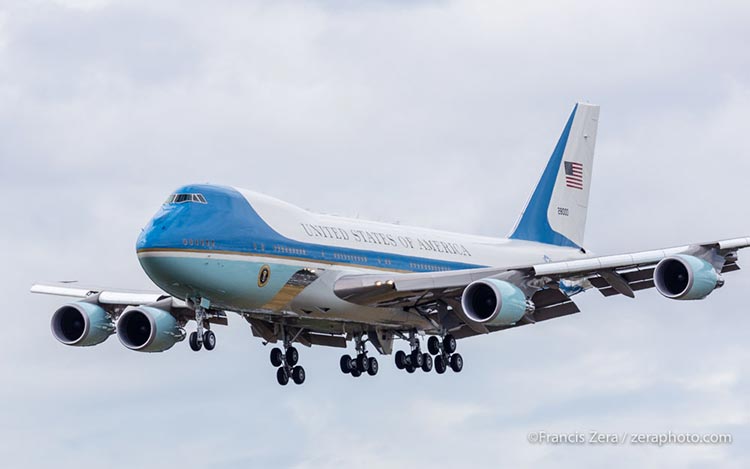
Air Force One landing at Seattle-Tacoma International Airport
Being a photojournalist can mean a lot of stressful work, but it definitely has its perks and one of the best experiences for an AvGeek photojournalist is being approved for White House press credentials and covering a presidential visit. I’ve been lucky enough to do that three times, and it never, ever, gets old.
This story is not about politics; it’s about the plane, the process of transporting a head of state, and what it’s like to cover the amazing ritual that is an Air Force One arrival/departure sequence.
Presidential travels are never a simple affair; watching the ballet of security and military ritual, one can’t help but to be impressed by the sheer magnitude of managing the task.
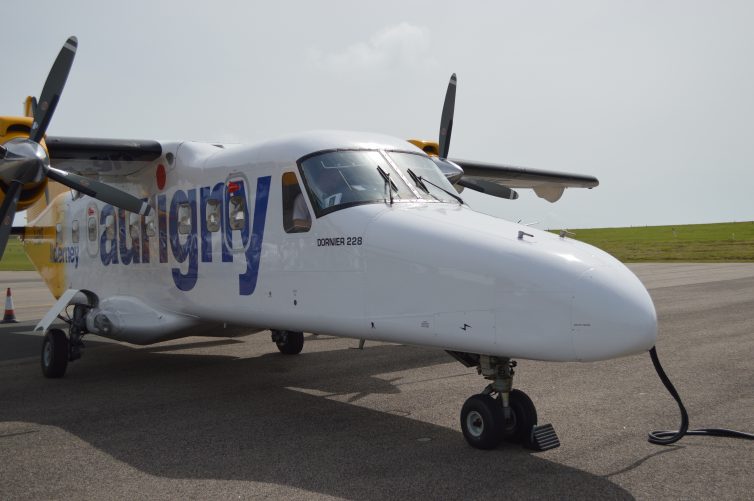
Aurigny’s Dornier DO228-200 – Photo: Alastair Long | AirlineReporter
This is a gem for the AvGeek: Four flights, three aircraft types, and one airline all in a single day. Could I generate some sort of silly AvGeek personal record? I would see. The opportunity arose by a chance encounter with Andy Butler, Distribution Services Manager for Aurigny Air Services at an industry event. Established in 1968 and nationalized in 2003, Aurigny (pronounced “Or-rini”) is the national carrier of Guernsey, an island in the English Channel (or La Manche, if you’re French). Together with the islands of Alderney, Sark, and some smaller islands, they form part of the Bailiwick of Guernsey. Along with Jersey, they are more commonly known as the Channel Islands.
The Channel Islands are British Crown dependencies, but are not part of the UK or the EU. Given the Channel Islands’ proximity to France, and having historically been part of the Duchy of Normandy, there is a distinctly Anglo-French heritage. Aurigny means Alderney in Norman French. Anyhow, geography and history lessons over. Back to flying.
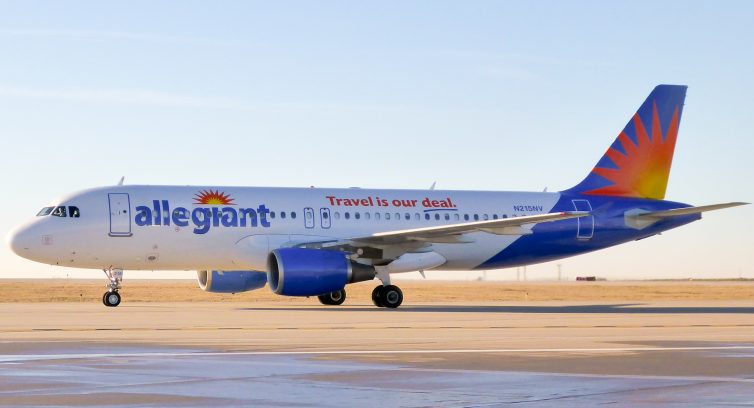
An Allegiant A320 in the current livery, seen at Kansas City International – Photo: C.T. Thongklin
Late last month Allegiant announced plans to acquire twelve new Airbus A320s. Airlines make fleet announcements often, but this one was of particular significance for a number of reasons.
Allegiant’s order for new A320s:
First, this order for brand-new planes, direct from Airbus, signals a change in standard operating procedure for the Las Vegas-based ultra-low-cost carrier (ULCC). Historically, Allegiant had shirked the trend of its ULCC peers, both domestically and abroad, of adopting fuel-efficient, modern aircraft. Instead, the airline has had a well-known preference for less costly mid-to-late life secondhand McDonnell Douglas MD-80 series planes. Cheaper planes equate to lower fares, and higher margins. This concept is not new; many budget carriers have used that model and benefited greatly from it (some have not). Allegiant is no exception. The airline is so well known for this preference, in fact, that few realize that the airline began acquiring Airbus aircraft in 2013. I myself was surprised to learn that the number of available seat miles flown by Allegiant’s Airbus fleet is nearly tied with that of their larger McDonnell Douglas fleet. Jude Bricker, Allegiant Travel Company senior vice president of planning, confirms expectations that the Airbus fleet will tip the scales by the close of 2016.
Older, used Airbus planes are known for being attractively priced. This is something Allegiant saw as early as 2012 when the airline announced plans to acquire its first batch of A319s. Then-President Andrew C. Levy stated, “A319 asset values have significantly declined and now mirror the environment we saw when we first began buying MD-80s.” While Airbus has focused much of its attention on pushing its newer and higher priced NEO (new engine option) models, it seems existing Airbus variants and future current engine option (CEO) deliveries are well positioned to become as ubiquitous as the much loved, budget friendly, long-lived MD-80s they are slowly but steadily replacing.
Allegiant’s newest (employee-approved) livery iteration:
Alongside this announcement, the airline unveiled plans for an incremental livery modification. Two final contenders were chosen, and employees were given an option to vote on which would be adopted.
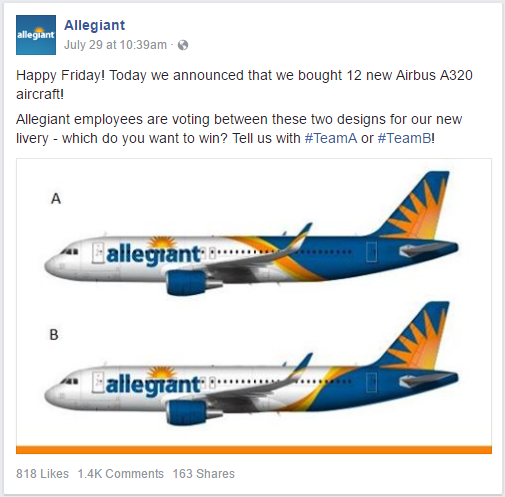
Allegiant announces A320 purchase and new livery candidates – Image: Allegiant’s Facebook
Which did the employees choose?
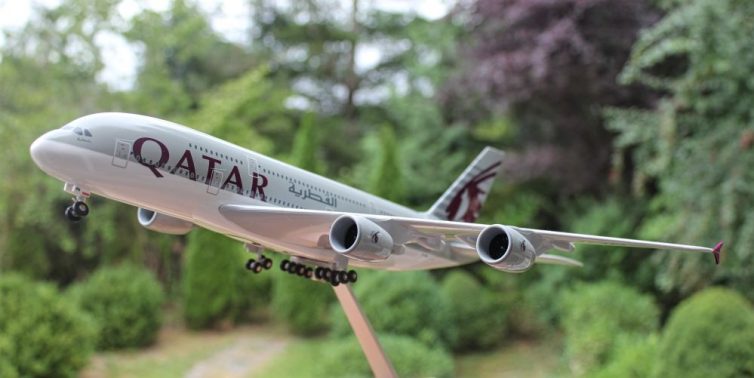
This can be all yours – Photo: AirlineReporter
Do you want to win a Qatar Airways Airbus A380 model? Of course you do! Lucky for you, we have one and we are looking to give it a new home. All you need to do is make sure you are following us on Twitter, and then retweet our contest tweet and you are eligible. The contest will be open until 5:00 p.m. PDT on Friday, August 26th and at that point we will randomly pick from the valid entries. Here, I will make it easy for you with the official tweet below:
%CODE1%
Update: CONGRATS to @lauratherad for winning this sweet, sweet model! Stay tuned for our next contest!
(not so) FREQUENTLY ASKED QUESTIONS
Can you please give me more details about the model?
Yes. It is a 1:200-sized model (a.k.a. big — 14.5″ long, 16″ wingspan). I can’t tell who makes it, but it has a fancy wooden stand. It’s registration number is A7-APA, which makes it the 137th A380 built, and it first flew in June 2013.
Wait, is this a used model?
The photo is of my personal model. The one we are giving away is brand new, in box. We can be model buddies.
Who is eligible?
If you have a Twitter account and follow the rules — you are. I will ship it anywhere in the world to the winner.
Does the model actually fly?
Yes. Once.
I work for Delta, can I win?
Of course. As long as you proudly display it at work.
Does this come with subsidies?
Ha… funny, but no they are not included.
Can you just declare me the winner?
Yes I can. Will I? No.
I don’t have Twitter?
That sucks. Sorry, you need to do this on Twitter to win. It’s free to sign up!
Can I enter on Snapchat?
What’s Snapchat?
It is a fun app where you can take photos and make yourself a princess or a panda bear that cries rainbows — that work?
Um… no.
Can I just leave a comment on this story?
Sure… I probably will even reply to your comment, but it won’t enter you into the contest.
Can you wish me luck?
Good luck!






